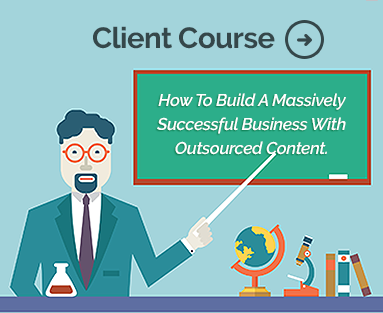Are you aware that 57 million Americans read blogs? With these sorts of numbers, it’s easy to see why anyone who wants to run a successful website should make use of blog posts.
But how do you work blog posts into your SEO content strategy? What’s the best length for a blog post? Should blog post lengths vary per individual company?
If you’ve found yourself asking these questions, you’ve come to the right place. This article will walk you through everything you need to know about the length of your blog posts.
Extremely Short Posts
An extremely short blog post is a post of 300 words or less. You can think of this as a single page of content or the blurb on the back of a book. These short bursts of content can be very satisfying to read and write: but how valuable are they for a content strategy?
If you want to convey information quickly and efficiently, you should go with a short blog post. You don’t need to take too long to update your customers on developments in your company.
You also don’t need to take too long to provide your opinions on developments in the industry. This is good to do since it will help establish you as a thought leader.
However, SEO must always be considered in anyone’s content strategy. SEO is hyper-important since most people never make it past the first page of search engine results.
Unfortunately, extremely short blog posts aren’t quite so viable for SEO. While they can convey effective amounts of information in a short amount of time, the short length doesn’t allow them quite as much opportunity for the use of keywords.
Short Posts
Short posts are generally considered to fall within the range of 300 to 700 words. With this range of information, you can show more than just a cursory pass at a topic. You can inject your short takes and updates with a level of wit, poise, and style.
Short posts of this size are great to drive engagement and encourage sharing. Anything less might not seem worth it to share, but posts of this length actually might get the ball rolling. They’re also just big enough to start affecting SEO.
Unfortunately, they’re not quite long enough to truly explore multiple aspects of a subject, so you’re not going to be able to use them to truly drive long-term engagement. However, if you make enough of them, you can use them to drive some new clicks.
Lower Mid-Length Posts
Lower mid-length posts are generally around 700-1000 words long. These posts aren’t short enough for a reader to just take a quick glance. If they want to engage in your article, they’re going to have to invest some effort.
This length of posts is long enough to affect your SEO ranking. You can fill blog posts of this length up with keywords without sacrificing the integrity of the article.
On top of this, the longer time that customers are spending reading the articles will also drive your SEO — search engines will quickly see that your website is where customers like to spend their time.
While your short posts are good for grabbing customers quickly, mid-length pots are going to become your bread and butter for building an effective and sustainable SEO strategy over the course of a long period of time.
Upper Mid-Length Posts
Upper mid-length posts generally range from 1500 to 2000 words. These are similar in advantages to lower mid-length posts. However, the added length lets one explore multiple sides of an issue rather than one detailed take.
Posts of this length will help you establish your company as one that’s able to think deeply about a topic. They’re more difficult to write, however, so you need to make sure the writers you hire to tackle posts of this length know what they’re doing.
As far as our service goes, it’s more cost-efficient to go with one big blog post, rather than several small ones. We recommend ordering several posts of this length to build up a formidable content strategy, and show you’re serious about your place in your industry.
It’s a good idea to pair posts of this length with updates (and maybe even summaries) that are much shorter (even extremely short). This way, you can show your customers that you’re both able to think deeply about a topic and summarize in quick, efficient bursts.
Long Blog Posts
Long blog posts are posts of over 2000 words. These allow you to give a complete look at a topic from every side necessary. If you want an article to read as reliable, there’s no better length of posts to go with.
However, you need to make sure you’re able to communicate all of your information effectively at this length. Otherwise, you’re just wasting visitors’ time.
Posts of this length provide huge opportunities for loading up an article with keywords. If you want to get customers to stay on your page for a long period of time, you should occasionally drop a long blog post.
You can’t post these all of the time. Posts of this length are as long as some of the world’s most famous short stories. However, working these in between your mid-length posts is a great way to build up reliability, reputation, and long-term readership.
Understand the Best Length For a Blog Post
At the end of the day, the best length for a blog post depends on what content you’re trying to create. You should make use of many different lengths of blog posts to constantly surprise and delight your customers.
However, if we were to give a more straight answer, we’d say you should go with mid-length or long posts of at least 1000 words to really be able to delve deep into a subject.
For more information on SEO, or to buy some SEO content, contact us at iWriter today.




Comments are closed.